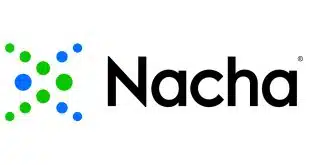Look for more ATM placements, capital spending, and possible acquisitions by leading retail ATM network owner and operator Cardtronics Inc. in 2016. The growth plan mostly conforms to the long-term strategy the company has been following in recent years, according to comments by top Cardtronics executives late Thursday.
Houston-based Cardtronics has been buying smaller ATM companies and enhancing its machines in recent years to diversify its operations and capitalize on demand for cash as banks pare their branch networks. The company also is trying to fill a looming hole with the mid-2017 expiration of its contract with leading convenience-store operator 7-Eleven Inc., where Cardtronics has 7,800 ATMs deployed that generate about 17% of company revenues. 7-Eleven is switching its ATM business to a corporate affiliate of its Japanese parent company.
“I have stated that Cardtronics is a growth company in a growing global industry,” chief executive Steve Rathgaber said in a conference call with analysts to review financial results for 2015’s fourth quarter. “Industry statistics continue to indicate that both ATM placements and withdrawal transactions are growing in the high single digits around the world,” he said, according to a transcript from Thomson Reuters StreetEvents.
Thanks to acquisitions and contract wins, especially in Europe, Cardtronics ended 2015 with 189,791 transacting ATMs either owned or managed, up 72% from 110,206 in 2014. Cardtronics is rumored to be interested in buying NoteMachine, a big U.K.-based ATM company, according to a research report from investment firm William Blair & Co., but Cardtronics executives did not mention specific acquisition targets.
Phil Chin, Cardtronics’ executive vice president of corporate development, however, did say on the call that “we’re an acquirer of choice for anything ATM-related globally, so we’re seeing a range of things across size and geographies.” But chief financial officer Chris Brewster added that Cardtronics would not be throwing “a Hail Mary pass just to fill the hole that 7-Eleven leaves when that contract comes to an end,” according to the transcript.
Meanwhile, the company expects capital expenditures to range from $150 million to $160 million this year, compared with $110 million in 2014 and $142 million in 2015, according to William Blair. Some 45% of this year’s spending will go for ATMs and their installation as a result of new business, with 35% for replacements and upgrades at existing locations.
Some of the spending also will go for enabling U.S. ATMs to accept EMV chip cards, which William Blair estimates will cost the company about $45 million in all. U.S. deployers face an October 2016 liability shift from MasterCard Inc. that will force them to absorb fraud losses from certain transactions if their machines cannot read EMV chip cards.
“We will focus a great deal of energy on U.S. EMV preparedness,” said Rathgaber, according to the transcript. “We will continue to work to find the silver lining in that expensive and distracting EMV cloud by leveraging the event for an active upgrade of our fleet and capabilities, all of which should give us our best performing—our best platform for feature-function launch in our corporate history as we head into 2017.”
Cardtronics reported net income of $14.8 million for the fourth quarter, up 169% from $5.52 million a year earlier, on revenues of $303.3 million, an increase of 7% from $283.9 million. For the year, the company posted net income of $67.1 million, up 81% from $37.1 million in 2014, on revenues of $1.20 billion, up 14% from $1.05 billion. Cardtronics said it handled 759 million cash-withdrawal transactions and dispensed almost $100 billion in cash last year.





